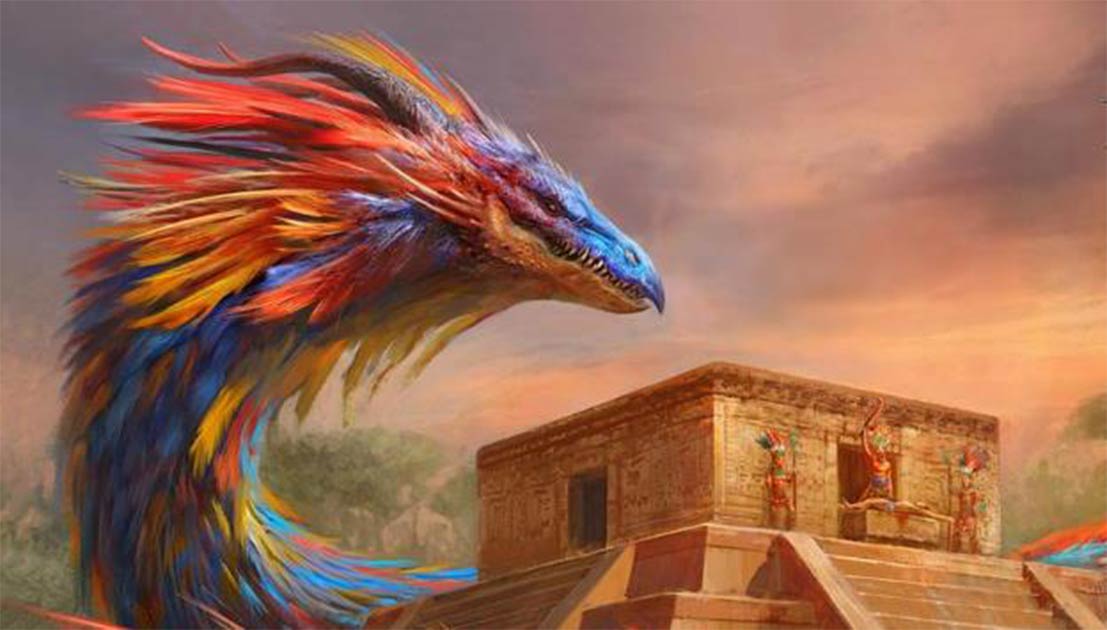Hello ladies and gents this is the Viking telling you that today we are talking about
QUETZALCOATL
Quetzalcoatl is a deity in Aztec culture and literature whose name comes from the Nahuatl language and means "Precious serpent" or "Quetzal-feathered Serpent". In the 17th century, Ixtlilxóchitl, a descendant of Aztec royalty and historian of the Nahua people, wrote, "Quetzalcoatl, in its literal sense, means 'serpent of precious feathers', but in the allegorical sense, 'wisest of men'
Among the Aztecs, whose beliefs are the best-documented in the historical sources, Quetzalcoatl was related to gods of the wind, of the planet Venus, of the dawn, of merchants and of arts, crafts and knowledge. He was also the patron god of the Aztec priesthood, of learning and knowledge.
Quetzalcoatl was one of several important gods in the Aztec pantheon, along with the gods Tlaloc, Tezcatlipoca and Huitzilopochtli. Two other gods represented by the planet Venus are Quetzalcoatl's ally Tlaloc (the god of rain), and Quetzalcoatl's twin and psychopomp, Xolotl.
Quetzalcoatl, the Aztec god of wind, air, and learning, wears around his neck the "wind breastplate" ehēcacōzcatl, "the spirally voluted wind jewel" made of a conch shell.
This talisman was a conch shell cut at the cross-section and was likely worn as a necklace by religious rulers, as such objects have been discovered in burials in archaeological sites throughout Mesoamerica, and potentially symbolized patterns witnessed in hurricanes, dust devils, seashells, and whirlpools, which were elemental forces that had significance in Aztec mythology.
Codex drawings pictured both Quetzalcoatl and Xolotl wearing an ehēcacōzcatl around the neck. Additionally, at least one major cache of offerings includes knives and idols adorned with the symbols of more than one god, some of which were adorned with wind jewels. Animals thought to represent Quetzalcoatl include resplendent quetzals, rattlesnakes (coatl meaning "serpent" in Nahuatl), crows, and macaws.
In his form as Ehecatl he is the wind, and is represented by spider monkeys, ducks, and the wind itself. In his form as the morning star, Venus, he is also depicted as a harpy eagle. In Mazatec legends the astrologer deity Tlahuizcalpanteuctli, who is also represented by Venus, bears a close relationship with Quetzalcoatl.
The earliest known documentation of the worship of a Feathered Serpent occurs in Teotihuacan in the first century BC or first century AD. That period lies within the Late Preclassic to Early Classic period (400 BC – 600 AD) of Mesoamerican chronology; veneration of the figure appears to have spread throughout Mesoamerica by the Late Classic period (600–900 AD).
In the Postclassic period (900–1519 AD), the worship of the feathered-serpent deity centred in the primary Mexican religious center of Cholula. In this period the deity is known to have been named Quetzalcōhuātl by his Nahua followers. In the Maya area he was approximately equivalent to Kukulkan and Gukumatz, names that also roughly translate as "feathered serpent" in different Mayan languages.
In the era following the 16th-century Spanish conquest of the Aztec Empire, a number of records conflated Quetzalcoatl with Ce Acatl Topiltzin, a ruler of the mythico-historic city of Tollan. Historians debate to what degree, or whether at all, these narratives about this legendary Toltec ruler describe historical events.
Furthermore, early Spanish sources written by clerics tend to identify the god-ruler Quetzalcoatl of these narratives with either Hernán Cortés or Thomas the Apostle—identifications which have also become sources of a diversity of opinions about the nature of Quetzalcoatl.
and as always have a chilled day from the Viking

Comments
Post a Comment